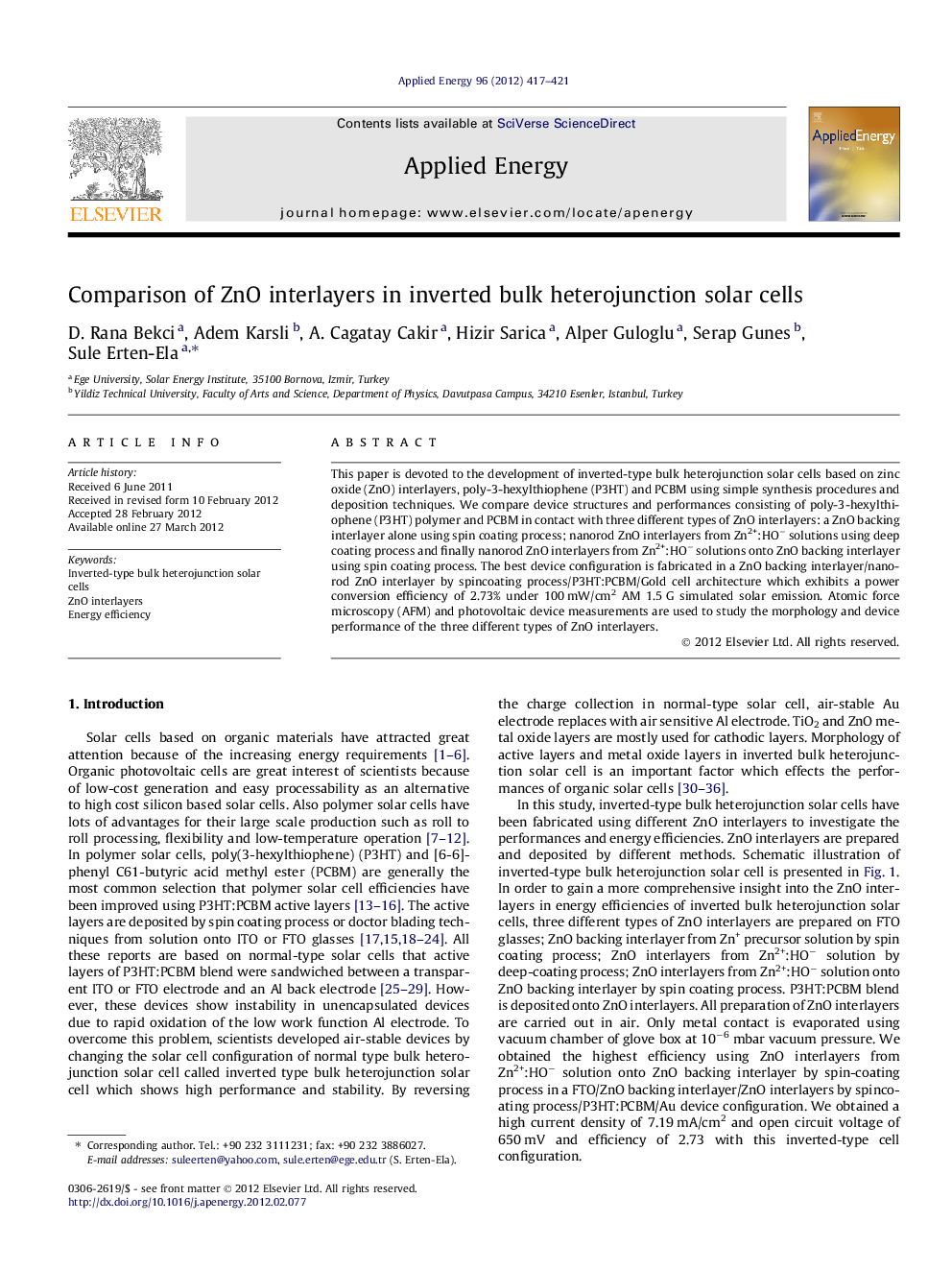| Article ID | Journal | Published Year | Pages | File Type |
|---|---|---|---|---|
| 243289 | Applied Energy | 2012 | 5 Pages |
This paper is devoted to the development of inverted-type bulk heterojunction solar cells based on zinc oxide (ZnO) interlayers, poly-3-hexylthiophene (P3HT) and PCBM using simple synthesis procedures and deposition techniques. We compare device structures and performances consisting of poly-3-hexylthiophene (P3HT) polymer and PCBM in contact with three different types of ZnO interlayers: a ZnO backing interlayer alone using spin coating process; nanorod ZnO interlayers from Zn2+:HO− solutions using deep coating process and finally nanorod ZnO interlayers from Zn2+:HO− solutions onto ZnO backing interlayer using spin coating process. The best device configuration is fabricated in a ZnO backing interlayer/nanorod ZnO interlayer by spincoating process/P3HT:PCBM/Gold cell architecture which exhibits a power conversion efficiency of 2.73% under 100 mW/cm2 AM 1.5 G simulated solar emission. Atomic force microscopy (AFM) and photovoltaic device measurements are used to study the morphology and device performance of the three different types of ZnO interlayers.
Highlight► Inverted bulk heterojunction solar cells are fabricated using ZnO interlayers. ► ZnO interlayers effect the efficiency of inverted bulk heterojunction solar cells. ► The best device configuration exhibits a power conversion efficiency of 2.73%.
